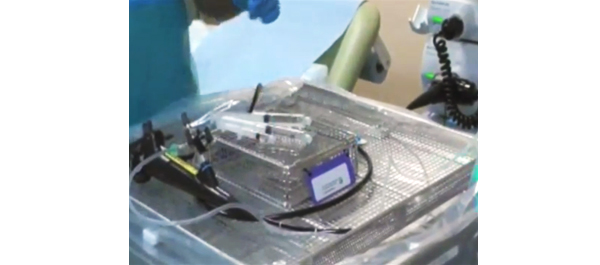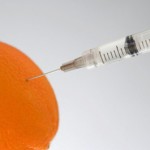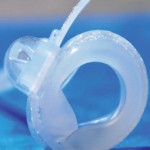Article of the week: Botulinum toxins are not interchangeable for overactive bladder
Every week the Editor-in-Chief selects the Article of the Week from the current issue of BJUI. The abstract is reproduced below and you can click on the button to read the full article, which is freely available to all readers for at least 30 days from the time of this post.
In addition to the article itself, there is an accompanying editorial written by a prominent member of the urological community. This blog is intended to provoke comment and discussion and we invite you to use the comment tools at the bottom of each post to join the conversation.
Finally, the third post under the Article of the Week heading on the homepage will consist of additional material or media. This week we feature a video of Miss Ravindra and colleagues discussing their article.
If you only have time to read one article this week, it should be this one.
Botulinum toxin type A for the treatment of non-neurogenic overactive bladder: does using onabotulinumtoxinA (Botox®) or abobotulinumtoxinA (Dysport®) make a difference?
Pravisha Ravindra, Benjamin L. Jackson and Richard J. Parkinson
Nottingham Urology Centre, Nottingham University Hospitals, NHS Trust, Nottingham, UK
OBJECTIVE
• To compare the clinical effects of two different commercially available botulinum toxin type A products, onabotulinumtoxinA (Botox®; Allergan Inc., Irvine, CA, USA) and abobotulinumtoxinA (Dysport®; Ipsen Ltd, Slough, UK), on non-neurogenic overactive bladder (OAB).
PATIENTS AND METHODS
• We included 207 patients, who underwent treatment with botulinum toxin type A for non-neurogenic OAB from January 2009 to June 2012 at our institution, in a prospective database that recorded details of their presentation, treatment and outcomes.
• In December 2009, our institution switched from using onabotulinumtoxinA to using abobotulinumtoxinA.
RESULTS
• Results from the onabotulinumtoxinA cohort (n = 101) and the abobotulinumtoxinA cohort (n = 106) were compared.
• Similar reductions in daytime frequency, nocturia and incontinence episodes were observed after treatment, with no difference in duration of effect.
• The abobotulinumtoxinA cohort had almost twice the rate of symptomatic urinary retention (23 vs 42%) requiring intermittent self-catheterisation (ISC).
CONCLUSIONS
• AbobotulinumtoxinA use was complicated by a significantly higher risk of requiring ISC.
• The study suggests that these two toxins are not interchangeable at the doses used.
Read Previous Articles of the Week




This paper further supports our systematic review 2 years ago –
Eur Urol. 2011 Oct;60(4):784-95. doi: 10.1016/j.eururo.2011.07.001. Epub 2011 Jul 13.
Contemporary management of lower urinary tract disease with botulinum toxin A: a systematic review of botox (onabotulinumtoxinA) and dysport (abobotulinumtoxinA).
Mangera A, Andersson KE, Apostolidis A, Chapple C, Dasgupta P, Giannantoni A, Gravas S, Madersbacher S.
Sheffield Teaching Hospitals NHS Trust, Sheffield, UK.
Abstract
CONTEXT:
The use of botulinum toxin A (BoNTA) in the treatment of lower urinary tract dysfunction has expanded in recent years and the off-licence usage list includes neurogenic detrusor overactivity (NDO), idiopathic detrusor overactivity (IDO), painful bladder syndrome (PBS), and lower urinary tract symptoms resulting from bladder outflow obstruction (BOO) or detrusor sphincter dyssynergia (DSD). There are two commonly used preparations of BoNTA: Botox (onabotulinumtoxinA) and Dysport (abobotulinumtoxinA).
OBJECTIVE:
To compare the reported outcomes of onabotulinumtoxinA and abobotulinumtoxinA in the treatment of NDO, IDO, PBS, DSD, and BOO for adults and children.
EVIDENCE ACQUISITION:
We performed a systematic review of the published literature on PubMed, Scopus, and Embase in the English language reporting on outcomes of both BoNTA preparations. Review articles and series with <10 cases were excluded. The articles were graded for level of evidence and conclusions drawn separately for data with higher-level evidence.
EVIDENCE SYNTHESIS:
There is high-level evidence for the use of onabotulinumtoxinA and abobotulinumtoxinA in adults with NDO but only for abobotulinumtoxinA in children with NDO. Only onabotulinumtoxinA has level 1 evidence supporting its use in IDO, BOO, DSD, and PBS/interstitial cystitis.
CONCLUSIONS:
We identified good-quality studies that evaluated onabotulinumtoxinA for all the indications described above in adults; such was not the case with abobotulinumtoxinA. Although this does not imply that onabotulinumtoxinA is more effective than abobotulinumtoxinA, it should be a consideration when counselling patients on the use of botulinum toxin in urologic applications. The two preparations should not be used interchangeably, either in terms of predicting outcome or in determining doses to be used.
Voiding dysfunction following Botulinum toxin-A treatment for OAB is a problem. The main reason studies are not comparable in this regard is the parameters to instigate CISC are variable from one to the next. Some will consider symtoms, a PVR value or both. Like the group from Nottingham we tend to use symptoms and a value cut off of 150 mL. This is not evidence based. As mentioned in the editorial a figure of > 40% of functional capacity (Abrams; Chapple) seems appropriate. It is interesting that even with the lower dose of AbootulinumtoxinA (300 U) cisc rates were high. Technique will bound to have an effect. Trigonal / bladder base injections maybe equally efficacious with less CISC need. Smith & Chancellor have published on this previously. This is the preferred method by many now and is safe as trigonal injections do not promote VUR.
Now the license for OnabotulinumtoxinA is on the horizon here in the UK, with FDA approval in the US already, using different formulations will become harder to justify.
Although this form of treatment is effective in the majority, several problems still need solving; Optimum techniques to lower CISC being one of them, long term safety and the other major issue is the unexplained relatively high UTI rate following treatment. The latter is a particular mystery.
Arun Sahai
Consultant Urologist & Honorary Senior Lecturer
Guy’s Hospital
King’s Health Partners